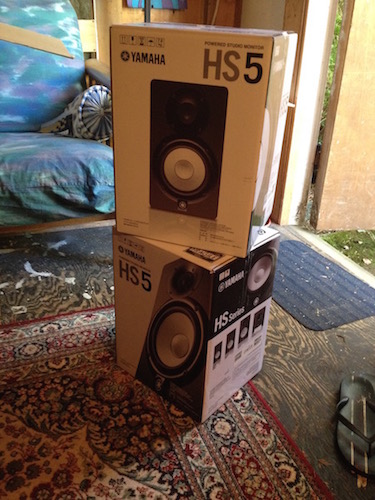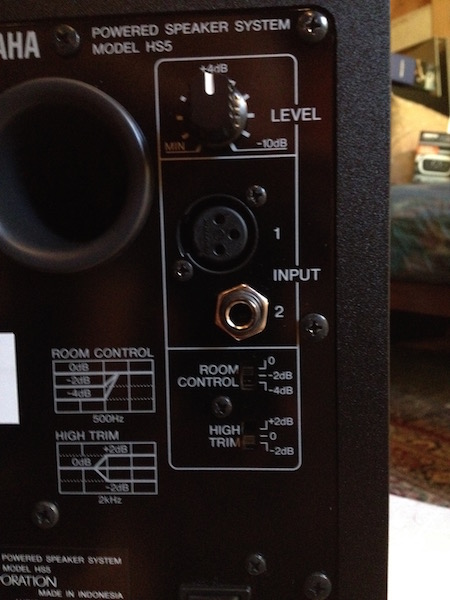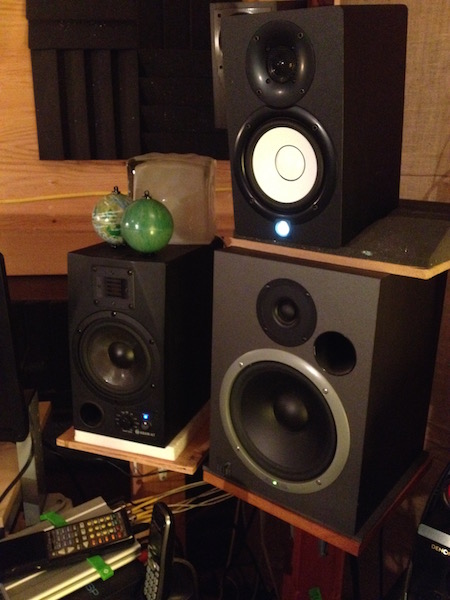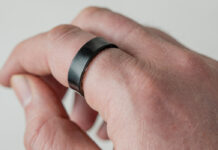 A couple of small (but heavy) boxes arrived on my doorstep the other day.
A couple of small (but heavy) boxes arrived on my doorstep the other day.
Doesn’t the saying go “good things come in small packages?” That’s one of the sentiments that first came to mind when I was putting these Yamaha HS5’s through their paces. The Yamaha HS5’s came as a pleasant surprise to me. There’s a common misconception that small studio monitors are just for folks who can’t afford larger monitors. That is definitely not the case with these monitors—they’re not only affordable, but they’re good … quite good!
I’ll come clean and admit that I came to the realization that I had a bit of a prejudice against Yamaha monitors coming into this review. I started getting seriously in the pro-audio realm at around the time that the project studio/bedroom studio craze started about fifteen-twenty years ago. Back then, the Yamaha NS10’s were in pretty well every professional studio, but they were being seriously threatened by powered near-field monitors. The NS10’s required a power amplifier and, to be honest, I didn’t really like the sound of them that much. I opted for a pair of Event 20/20’s which I still have … 15 years later.
Fast forward to today through Yamaha’s previous HS and MSP series of monitors, we come to the latest family of monitors: HS5, HS7, HS8 and HS8S (the subwoofer). Yamaha has kept the iconic white-colored woofer it introduced with the NS10’s. If you can’t get enough of that woofer colour, you can also get these monitors in … all white.


The 411 on the HS5’s
The HS5’s are built with a small room in mind. They measure 6.7 inches in width, 11.25 inches in height and 8.75 inches deep, with a weight of 11.7 pounds.
The HS5’s white 5″ woofer and 1″ dome tweeter are bi-amplified. A 45W amplifier powers the woofer, while a 25W amp drives the tweeter. The Yamaha logo below the woofer, illuminates when the unit is powered on.
 The back panel reveals the units’ port, input receptacles and various controls. There is both an XLR and TRS balanced input. A continuously variable level control with a +4dB center click is provided. There are also two switches:
The back panel reveals the units’ port, input receptacles and various controls. There is both an XLR and TRS balanced input. A continuously variable level control with a +4dB center click is provided. There are also two switches:
- Room Control which can engage a low shelf at 500Hz for -2 and -4 dB of reduction
- Hi Trim which can engage a high shelf of +/-2dB at 2kHz.
The monitor’s frequency response is stated to be 74Hz to 24kHz, –3dB (with 10dB-down points at 54Hz and 30kHz)—more on this later.
Spunky Little Things
I put a lot of different genres and artists through these little monitors. Pop, Rock, Jazz, Soundtracks, Classical … you name it, I threw it at them. I played around with the Room Control and Hi Trim switches, but, for the most part tested the HS5’s with everything at the flat setting.
To be fair, the little 5” woofers weren’t expected to reproduce extreme bass frequencies, but wow, did they ever do a good job on what they could reach. The ported design of the cabinet has a lot to do with getting the HS5’s to reach down as far as they can.
I noticed the bass rolling off around the 150-180 Hz range and pretty well disappearing below 60Hz. You’ll most likely want to have a subwoofer in conjunction with the HS5’s if you’re going to be dealing with getting accurate representations of bass frequencies below 60Hz.
… again, this is a 5” woofer we’re talking about.
 The imaging and clarity of the HS5’s was very good—I’d even go so far as to say outstanding for a monitor in this price range. The mid-range (especially the lower mids: 500Hz – 1.5kHz) are emphasized and bring elements such as vocals, guitars and other typical melodic focus instruments to the forefront.
The imaging and clarity of the HS5’s was very good—I’d even go so far as to say outstanding for a monitor in this price range. The mid-range (especially the lower mids: 500Hz – 1.5kHz) are emphasized and bring elements such as vocals, guitars and other typical melodic focus instruments to the forefront.
If I were to use a descriptor for these monitors, it would be “bright”. “Harsh” came to mind a couple of times, but seemed a bit too extreme. I perceived a noticeable emphasis in what’s typically thought of as high frequencies (>10kHz). This really brought out some of the shimmer and air of things like cymbals and scratchiness of violin bows. It didn’t necessarily become annoying, but when A/B/C’ing to the monitors with which I’m more familiar (Adam A7’s and Event 20/20’s), these bumps and dips popped out.
Bottom Line
I’d say that the Yamaha HS5’s are an excellent value. Frankly, I was surprised at the price range in which these monitors compete ($250-$300 each). These are a fantastic choice for amateurs looking for a first set of monitor speakers or professionals looking for a second (or third) pair of speakers to add to their setup.
Besides the frequency-response observations, the only nit-pick items I had were the location of the power button and trim control being on the back of the unit. Modern studio equipment doesn’t need to be perpetually left on anymore and having to reach around to access these controls is a slight annoyance. But, like I said, I’m nit-picking here.
I’d recommend adding a subwoofer to supplement the speakers and be aware of some of the elements that these speakers emphasize and attenuate.
There’s a whole lot of good in these small little packages. The HS5’s pack a lot of performance and features that rival monitors that are in higher price brackets. If you have any questions feel free to leave me comment below.
These will soon be available at Best Buy where you will find a wide assortment of recording equipment, musical instruments and accessories.




That’s a great and thorough review @chckn8r . I have always found Yamaha’s tonal characteristic to be the least “coloured” of all Japanese manufacturers. In essence Yamaha’s speakers have always provided very “natural sound”, especially in the Mid-Range area, where most manufacturers fail, in my opinion. Yamaha’s tonal qualities may closely resemble that of some well known British audio brands, that have been used as industry referance.
I recall listening to a pair of Yamaha NS1000 and I was astonished, as to how smooth and articulate they sounded, even at moderately high volume levels. Yamaha had another great Studio Monitor in the NS10 and variants of it, as you mentioned, which was in production for a very long time (I know what you mean about it’s SQ, it took a bit of getting used to in the right room). I can certainly see where the 10M has influenced the new HS5‘s, and how the HS5’s have been improved upon by design.
Kudos to Yamaha !
Comments are closed.